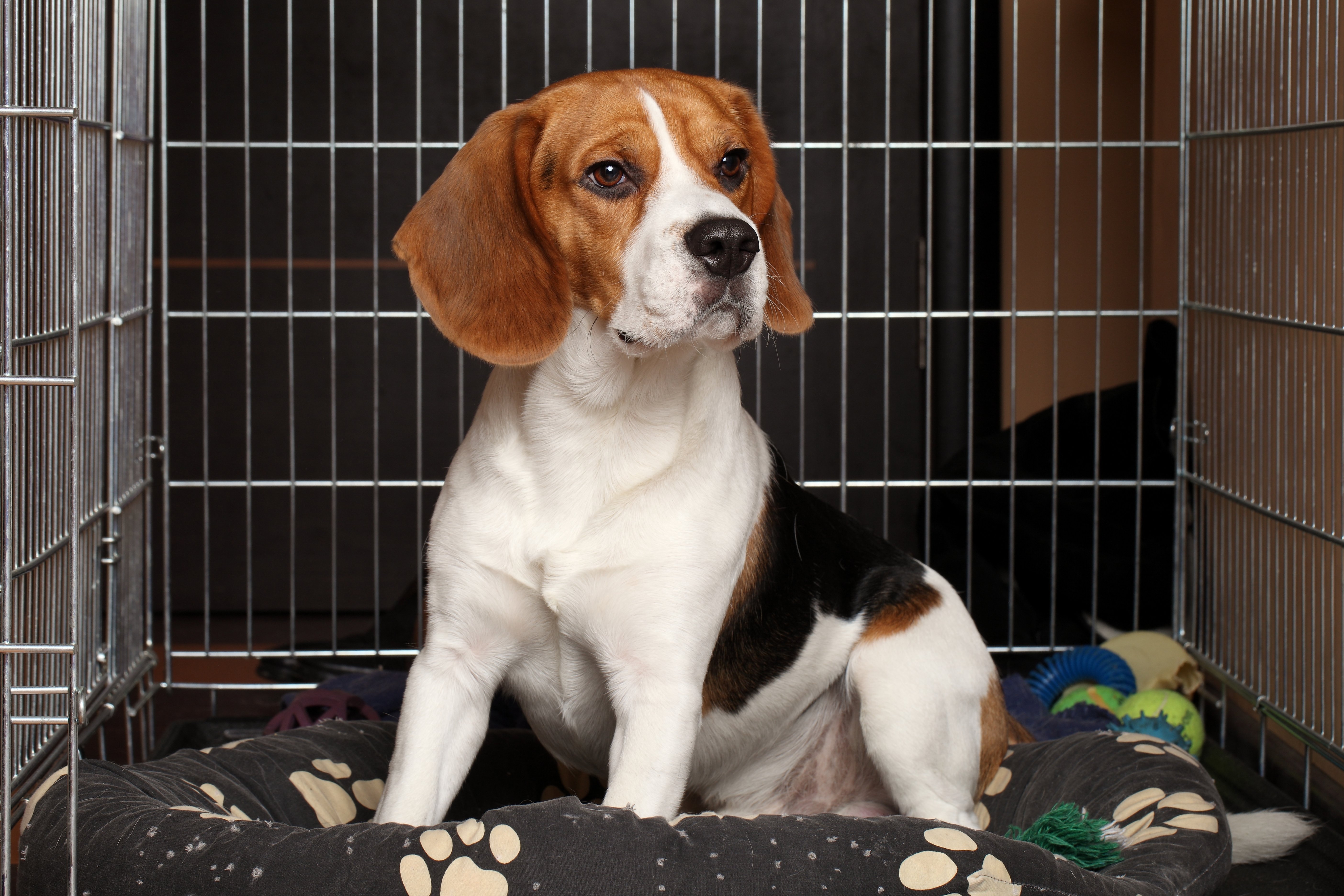
Crate training is a great way to keep your dog safe and contained while you’re out of the house. Not to mention, it’s a great method to help potty- and house-train your dog. However, just because it’s common doesn’t mean that it’s the easiest task. The good news is that it doesn’t have to be impossible. Here are six ways to make crate training easier—for you and your furry friend.
1. Talk to Your Vet
If you’ve been trying to crate train your dog for a while and nothing seems to be working, one of the best things you can do is talk to your vet. Dogs have many fears and phobias. If being left alone is one of them, crate training may not be the best choice for your dog right now. You may be able to decode this on your own (constant barking, accidents, and chewing on the crate could all be signs that your dog doesn’t like the crate), but there are times when a professional opinion can make a difference. Your vet has likely helped countless other pet owners navigate this process and could offer sage advice that will make life less stressful for you and your pooch.
2. Consider Trainability Before You Adopt
If you haven’t adopted a dog yet and training is a high priority, consider what breed you want to bring into your home. Different dog breeds are attuned differently to training. If you have time and patience, then this may not matter—most dogs can be trained on a schedule with dedication and repetition. However, if it’s important to get crate training out of the way early on, you may want to opt for a breed that’s known for being easier to work with.
3. Consider Feeding Inside the Crate
One of the easiest ways to make the crate more appealing to your dog (and to ensure your dog is comfortable in it), is to feed your dog meals in the crate. Every day, put their bowls in the crate and close the door. After they’ve finished eating, keep the door closed. Start with just a few minutes of post-meal crate time, slowly increasing this until they’re comfortable for longer stretches of time. This tactic may work best for younger puppies who are slowly trying to adjust to their space, but it can also be helpful for older dogs.
4. Prioritize Comfort
According to House Method, one way to make crate training easier for both you and your dog is to ensure the crate is a safe and comfortable space. Slowly get your pet acclimated by including a blanket and favorite toys covered with your scent inside the crate. Many dog owners also find that giving their dog a treat when they enter the crate increases their interest and comfort level with being inside.
5. Consider an Open Door Policy
The crate should be integrated as part of the home, and shouldn’t just be an area used for training. If you find yourself only approaching the crate when it’s time to “learn” something, your dog will only associate it with work. Instead, leave the crate door open when not in use. Keep a few toys inside and consider tossing in a treat every now and then. Your dog will enjoy the surprise of finding food and will consider the crate a normal part of the home—one that they can go in and out of as they please.
6. Take a Walk After Crate Time
Since the crate is so often used as a component of potty training, incorporate bathroom breaks after crate time. Taking your dog outside after being in the crate is a clear way to show that bathroom business happens outside of the house. It’s also helpful to establish that a walk or trip outside consistently follows crate time. This will get your dog into a routine, so they won’t be tempted to ruin your carpets.
Crate training doesn’t have to be a pain. Instead, it can be a fun bonding experience for everyone involved. If you’ve been struggling with your crate training experience or are about to begin and are in need of some pointers, don’t hesitate to give these a try. You and your dog will be on the way to crate comfort in no time.